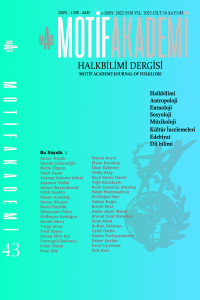TÜRK PORTRE RESMİNDE İNSANA İLİŞKİN BETİMLEME ÇABASINDA FİZYONOMİ/ İLM- İ SİMA/ FİRÂSET
PHYSIOGNOMY / ILM- I SIMA/ FIRÂSET IN THE EFFORT TO DEPICT HUMAN BEINGS IN TURKISH PORTRAIT PAINTING
Author(s): Erdal ÜNSALSubject(s): Cultural history, Visual Arts, Sociology of Art, History of Art
Published by: Motif Halk Oyunları Eğitim ve Öğretim Vakfı
Keywords: Turkish portrait painting; İlm- i sima; Physiognomy; Description;
Summary/Abstract: West painting initially carried out its attempt to describe human beings through the classification of humans on two opposite extremes, such as enmity or sublimation over belief systems. It is possible to come across all kinds of pictorial images based on the effort to create enemy and sublimation walking through beliefs in Western painting. This gradually lost its intensity by the end of the modern period and turned into an ideological and critical formative effort. The physiognomy, which we can briefly explain as an effort to read personality through the formal qualities of the human face, can be easily traced in Western painting. In the Western sense, Turkish painting had the opportunity to combine the form and color relationship it obtained from the West with its own visual accumulation, even when it was able to interact directly with the West. Our research focuses on the influence of physiognomy, which we can easily trace in the West, how corresponds to or how influences Turkish painting. In addition, another important purpose of the research is to try to reveal how the Turkish painter looks at people and how he interprets them with the help of the formal interpretation revealed by physiognomy with sample paintings. Due to the fact that the historical background of physiognomy dates back to Aristotle, not only the Western meaning of Turkish painting, but also miniatures have been studied with examples. The formal data of reading intentions from the face were compared with the selected portraits, and evaluations were made on the selected portraits in the context of physiognomy. These results show that the interpretations of Turkish painting about human and the meaning attributed to human are unique to itself.
Journal: Motif Akademi Halkbilimi Dergisi
- Issue Year: 16/2023
- Issue No: 43
- Page Range: 1469-1491
- Page Count: 23
- Language: Turkish

